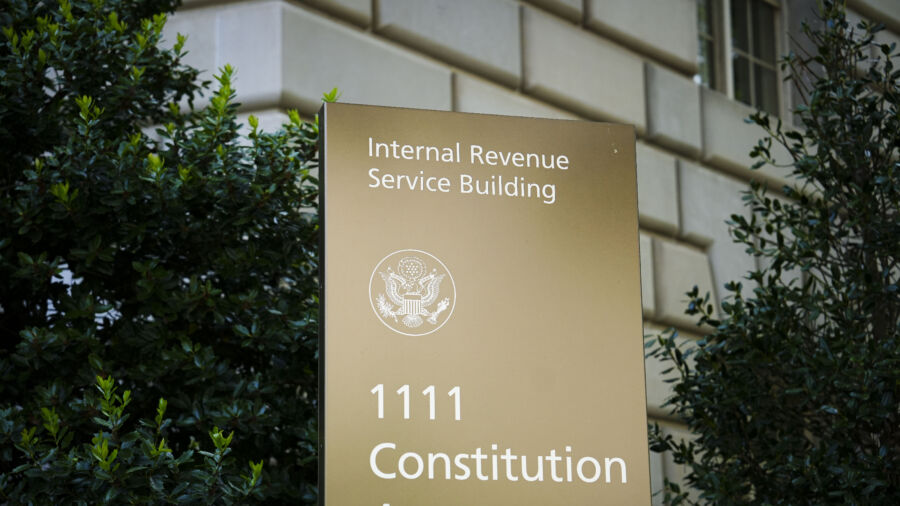The Internal Revenue Service (IRS) has reminded people born before 1951 to take the required minimum distributions (RMDs) from their retirement accounts by the end of 2023, while also highlighting a new change to the rule beginning this year.
RMDs refer to the amount that any individual with an employer-sponsored retirement plan or an IRA account is mandated to withdraw each year. If RMDs are not taken on time, the individual may be subject to penalties.
According to the old rules, RMDs are necessary once the plan participant reaches the age of 72. For individuals born before 1951, they must take the required minimum distributions beginning in 2023, the IRS said in a Dec. 20 press release. Such withdrawals must be made by Dec. 31.
A change was made to the RMD withdrawal age under the SECURE 2.0 Act of 2022, which bumped up the age requirement to 73 beginning this year. As such, individuals born in 1951 who turn 73 next year must take RMDs in the 2024 tax year, which will be due by April 1, 2025.
Those who turn 72 in 2023 are not required to take RMDs this year as the Secure 2.0 Act rules will apply beginning this year. They can wait to turn 73 in 2024 and then make the withdrawals.
“If an account owner fails to withdraw the full amount of the RMD by the due date, the owner is subject to an excise tax equal to 25 percent of the amount not withdrawn for 2023 and later years,” the IRS stated.
“The SECURE 2.0 Act dropped the excise tax rate from 50 percent for distributions required for 2023 and reduces the tax rate to 10 percent if the error is corrected within two years.”
RMD requirements apply for the beneficiaries of the following retirement plans: traditional IRAs, SEP IRAs, Simple IRAs, 401(k) plans, 403(b) plans, 457(b) plans, profit sharing plans, other defined contribution plans, and Roth IRA beneficiaries.
The withdrawn amount will be included under taxable income. However, some part of the amount may be tax-free, like qualified distributions from some Roth accounts. In such a situation, this amount will not be included under taxable income. Individuals can also withdraw more than the RMD threshold.
For IRA accounts, RMD withdrawals must be made once the individual hits the age threshold even if they are still employed.
“Owners of Roth IRAs are not required to take withdrawals during their lifetime. However, after the death of the account owner, beneficiaries of a Roth IRA are subject to the RMD rules,” the IRS states.
For employer-sponsored retirement plans like 401(k), 403(b), 457(b), and profit-sharing plans, the individual need not withdraw their RMD if they are still employed. Instead, they can wait till retirement to make the RMD withdrawal. However, this rule is not applicable if the person owns at least 5 percent of the business sponsoring the plan.
“Designated Roth accounts in a 401(k) or 403(b) plan are subject to the RMD rules for 2023. Beginning in 2024, designated Roth accounts will not be subject to the RMD rules while the account owner is still alive.”
RMD for Inherited Accounts, Pandemic Waiver
The IRA noted that if an individual inherits an employer-sponsored retirement plan or an IRA from the original owner, they may be required to make an RMD. This would depend on multiple factors:
- Whether the original account holder died after 2019.
- Whether the original owner passed away before or after the mandatory RMD date became active.
- The relationship between the beneficiary and the account owner.
The agency cited its Notice 2023-54 to state that certain non-spouse beneficiaries who are subject to the 10-year distribution rule will not be seen as violating the RMD requirements if they didn’t make such withdrawals in 2023.
The 10-year distribution rule applies to certain beneficiaries and requires that they empty the account by the end of the 10th year following the year of the original account owner’s death.
The tax agency also highlighted the issue of RMD distributions that were waived in 2020 owing to the COVID-19 pandemic.
“An account owner or beneficiary who received an RMD in 2020 had the option of returning it to their IRA or other qualified plan to avoid paying taxes on that distribution,” it said.
“A 2020 RMD that qualified as a coronavirus-related distribution could be repaid over a three-year period or have the taxes due on the distribution spread over three years.”
If the RMD withdrawal is large enough, the amount can push an individual into a high tax bracket and bring about some negative consequences. For instance, a large withdrawal can trigger Medicare Part B surcharge that high-income beneficiaries are required to pay.
To avoid this, individuals can consider converting their retirement accounts to a Roth IRA. Since the amount withdrawn from a Roth IRA is tax-free, any RMDs taken out from the account will not affect the person’s income tax brackets.
On the flip side, taking out money from a retirement account and rolling it into a Roth IRA would mean that the person has to pay taxes on this amount.
From The Epoch Times

